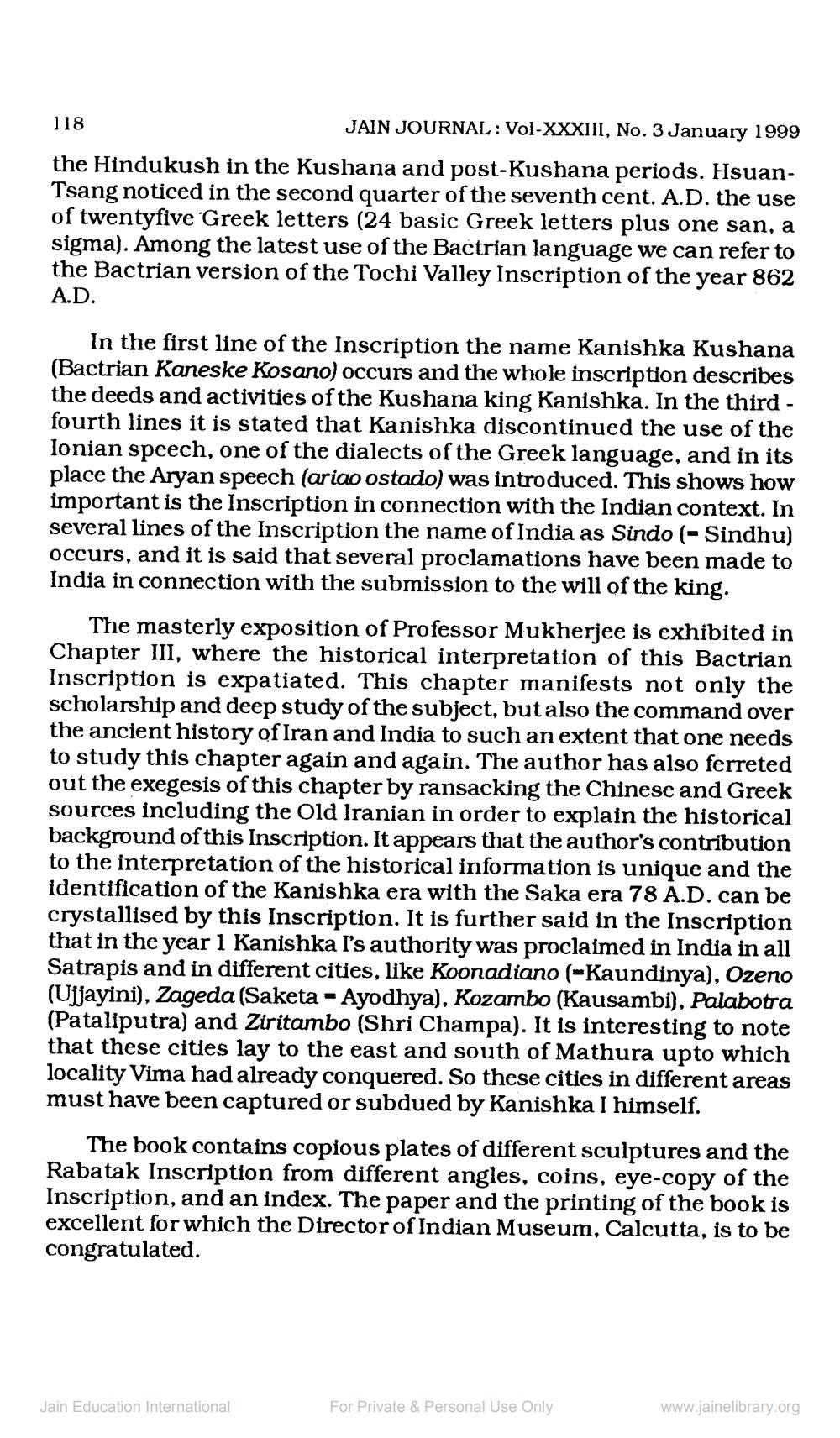________________
JAIN JOURNAL: Vol-XXXIII, No. 3 January 1999
the Hindukush in the Kushana and post-Kushana periods. HsuanTsang noticed in the second quarter of the seventh cent. A.D. the use of twentyfive Greek letters (24 basic Greek letters plus one san, a sigma). Among the latest use of the Bactrian language we can refer to the Bactrian version of the Tochi Valley Inscription of the year 862 A.D.
118
In the first line of the Inscription the name Kanishka Kushana (Bactrian Kaneske Kosano) occurs and the whole inscription describes the deeds and activities of the Kushana king Kanishka. In the thirdfourth lines it is stated that Kanishka discontinued the use of the Ionian speech, one of the dialects of the Greek language, and in its place the Aryan speech (ariao ostado) was introduced. This shows how important is the Inscription in connection with the Indian context. In several lines of the Inscription the name of India as Sindo (- Sindhu) occurs, and it is said that several proclamations have been made to India in connection with the submission to the will of the king.
The masterly exposition of Professor Mukherjee is exhibited in Chapter III, where the historical interpretation of this Bactrian Inscription is expatiated. This chapter manifests not only the scholarship and deep study of the subject, but also the command over the ancient history of Iran and India to such an extent that one needs to study this chapter again and again. The author has also ferreted out the exegesis of this chapter by ransacking the Chinese and Greek sources including the Old Iranian in order to explain the historical background of this Inscription. It appears that the author's contribution to the interpretation of the historical information is unique and the identification of the Kanishka era with the Saka era 78 A.D. can be crystallised by this Inscription. It is further said in the Inscription that in the year 1 Kanishka I's authority was proclaimed in India in all Satrapis and in different cities, like Koonadiano (-Kaundinya), Ozeno (Ujjayini), Zageda (Saketa - Ayodhya), Kozambo (Kausambi), Palabotra (Pataliputra) and Ziritambo (Shri Champa). It is interesting to note that these cities lay to the east and south of Mathura upto which locality Vima had already conquered. So these cities in different areas must have been captured or subdued by Kanishka I himself.
The book contains copious plates of different sculptures and the Rabatak Inscription from different angles, coins, eye-copy of the Inscription, and an index. The paper and the printing of the book is excellent for which the Director of Indian Museum, Calcutta, is to be congratulated.
Jain Education International
For Private & Personal Use Only
www.jainelibrary.org




